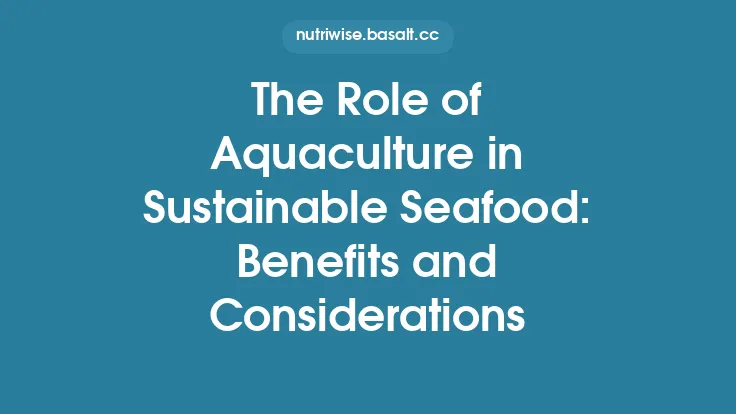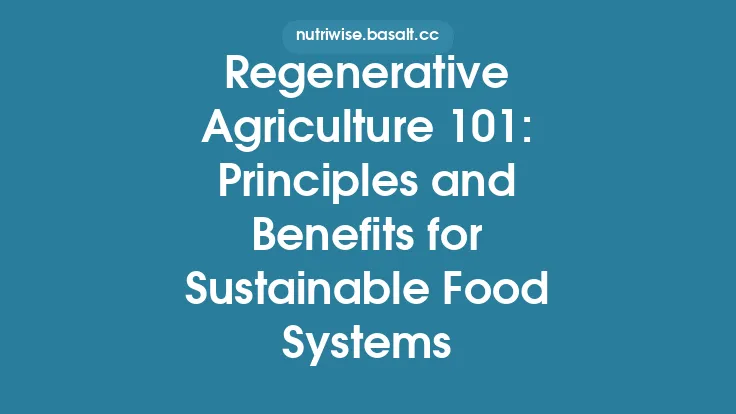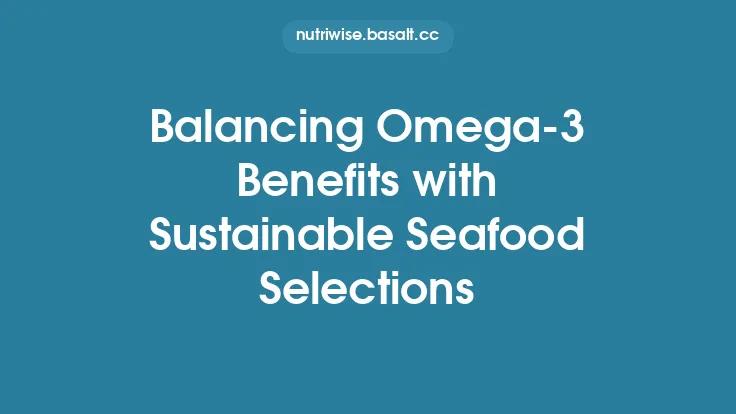Sustainable harvesting of pulses sits at the intersection of environmental stewardship and human nutrition. As the global population edges toward 10 billion, the demand for protein‑rich foods that can be produced with a low ecological footprint is intensifying. Pulses—dry‑seeded legumes such as lentils, chickpeas, dry peas, and various beans—offer a unique combination of nitrogen‑fixing ability, modest water requirements, and a dense nutrient matrix. When cultivated and harvested using practices that respect ecosystem limits, pulses can help mitigate climate change, preserve soil health, and deliver measurable health benefits to consumers.
Understanding Pulses and Their Role in Sustainable Food Systems
Pulses are defined by the Food and Agriculture Organization (FAO) as “the edible seeds of leguminous plants, harvested for dry grain.” Unlike fresh legumes (e.g., green beans or edamame), pulses are harvested at physiological maturity and stored for extended periods, which reduces post‑harvest loss and enables year‑round availability. Their agronomic traits—deep rooting systems, symbiotic nitrogen fixation, and relatively short growing cycles—make them especially suited to diversified cropping systems.
Key agronomic attributes that underpin sustainability:
| Attribute | Why It Matters |
|---|---|
| Biological Nitrogen Fixation (BNF) | Rhizobial bacteria in root nodules convert atmospheric N₂ into plant‑available ammonia, reducing the need for synthetic nitrogen fertilizers, which are energy‑intensive to produce and contribute to nitrous‑oxide emissions. |
| Low Input Water Demand | Many pulse species have high water‑use efficiency (WUE) and can thrive on rain‑fed agriculture, especially in semi‑arid regions. |
| Short Growing Season | Typical pulse crops mature in 70–120 days, allowing them to be intercropped or rotated with cereals, oilseeds, or cover crops. |
| Carbon Sequestration Potential | Deep root systems deposit organic carbon into subsoil layers, enhancing soil organic matter (SOM) and long‑term carbon storage. |
Environmental Impacts of Conventional Pulse Production
While pulses are inherently more sustainable than many animal‑based protein sources, conventional large‑scale production can still generate environmental pressures when best‑practice principles are ignored.
- Excessive Fertilizer Use
In regions where BNF is not fully realized—often due to inadequate inoculation or poor soil health—farmers may apply synthetic nitrogen to compensate, negating one of the pulse’s primary ecological advantages.
- Monoculture Expansion
Continuous cultivation of a single pulse variety can deplete specific micronutrients, increase susceptibility to pests, and diminish on‑farm biodiversity.
- Improper Harvest Timing
Harvesting before full seed maturation reduces protein and micronutrient density, while delayed harvest can increase losses to shattering, fungal infection, and mycotoxin formation.
- Post‑Harvest Energy Use
Over‑reliance on mechanical drying, high‑temperature storage, and long‑distance transport can inflate the carbon footprint of otherwise low‑impact crops.
Understanding these pitfalls is essential for designing harvesting protocols that preserve the environmental integrity of pulse production.
Principles of Sustainable Harvesting
Sustainable harvesting is not merely a post‑growth activity; it is a continuum that begins in the field and extends through storage, processing, and distribution. Core principles include:
- Timing Precision – Harvest at physiological maturity (typically when seed moisture content falls to 12–14 %). This maximizes protein, mineral, and phytochemical concentrations while minimizing post‑harvest losses.
- Gentle Mechanical Handling – Use low‑impact combine settings and grain elevators that reduce seed breakage, preserving both yield and quality.
- Energy‑Efficient Drying – Prioritize solar or low‑temperature drying (≤ 45 °C) to retain heat‑sensitive nutrients (e.g., B‑vitamins, polyphenols) and reduce energy consumption.
- Integrated Storage Management – Employ hermetic storage or controlled‑atmosphere facilities that limit oxygen, suppress pest proliferation, and maintain seed viability without chemical fumigants.
By embedding these practices into farm management plans, producers can safeguard the ecological benefits of pulses from field to fork.
Agroecological Practices for Pulse Cultivation
Agroecology offers a suite of field‑level interventions that reinforce the sustainability of pulse harvests.
1. Crop Rotation and Intercropping
Rotating pulses with cereals (e.g., wheat, barley) or oilseeds (e.g., mustard) leverages BNF to replenish soil nitrogen, breaking pest and disease cycles. Intercropping pulses with shallow‑rooted species can optimize light interception and reduce weed pressure, decreasing the need for herbicides.
2. Use of Indigenous Rhizobial Strains
Inoculating seeds with locally adapted rhizobia enhances nodulation efficiency, especially in marginal soils. Molecular screening of rhizobial populations can identify high‑performing strains for specific pulse varieties.
3. Conservation Tillage
Reduced tillage preserves soil structure, minimizes erosion, and maintains the habitat for beneficial soil microbes that support BNF. No‑till seeding equipment can place pulses at optimal depth while retaining residue cover.
4. Cover Crops and Green Manures
Following pulse harvest, planting a cover crop (e.g., rye, vetch) protects the soil surface, scavenges residual nitrogen, and adds organic matter, thereby improving the next crop’s water retention capacity.
Soil Health and Carbon Sequestration
Pulses contribute to soil health through several mechanisms:
- Root Exudates – Organic compounds released by pulse roots stimulate microbial activity, fostering a robust soil food web.
- Residue Incorporation – Post‑harvest residues (straw, pods) are high in lignin and cellulose, providing a slow‑release carbon source that builds SOM.
- Deep Carbon Deposition – Pulse root systems can extend beyond 1 m depth, depositing carbon in subsoil layers less prone to oxidation.
Quantitative studies have shown that integrating pulses into a three‑year rotation can increase SOM by 0.2–0.5 % per annum, translating to an estimated 0.5–1 t C ha⁻¹ yr⁻¹ of sequestered carbon. This not only mitigates greenhouse gas emissions but also improves water infiltration and nutrient cycling.
Water Use Efficiency and Climate Resilience
Pulses exhibit superior water use efficiency (WUE) compared with many cereals. WUE is expressed as grain yield per unit of evapotranspiration (ET). For example, chickpea typically achieves 2.5–3.0 kg m⁻³, whereas wheat averages 1.5–2.0 kg m⁻³ under similar climatic conditions.
Key strategies to preserve this advantage during harvest:
- Moisture‑Sensitive Harvest Scheduling – Harvesting when seed moisture is optimal reduces the need for artificial drying, conserving water and energy.
- Rain‑fed Harvest Logistics – Designing field access routes that minimize soil compaction during wet periods protects infiltration capacity.
By maintaining high WUE, pulse production can remain viable under increasingly erratic precipitation patterns associated with climate change.
Biodiversity Conservation through Pulse Rotations
Diversified pulse rotations support on‑farm biodiversity at multiple trophic levels:
- Beneficial Insects – Flowering pulse varieties provide nectar and pollen for pollinators and predatory insects, enhancing natural pest control.
- Soil Fauna – Earthworms and nematodes thrive in pulse‑rich soils, improving aeration and nutrient mineralization.
- Microbial Diversity – The symbiotic rhizobia and mycorrhizal fungi associated with pulses increase microbial richness, which is linked to ecosystem stability.
Sustainable harvesting practices that retain seed pods and residues in the field (rather than removing them entirely) further augment habitat complexity for these organisms.
Post‑Harvest Management and Minimal Processing
After harvest, the handling chain determines whether the environmental gains of pulse cultivation are preserved.
- Cleaning and Sorting – Mechanical cleaning that uses air flow rather than water reduces water consumption and wastewater generation. Optical sorting can remove defective seeds without chemical treatments.
- Drying – Solar dryers equipped with moisture sensors can automatically terminate the process once target moisture is reached, preventing over‑drying and energy waste.
- Packaging – Biodegradable or recyclable packaging (e.g., paper‑based laminates, compostable films) minimizes plastic waste. Vacuum‑sealed bags can extend shelf life, reducing food waste at the consumer level.
- Transportation – Consolidated shipments and route optimization software lower fuel use per kilogram of product delivered.
Health Benefits of Sustainably Harvested Pulses
The nutritional profile of pulses is well‑documented, but sustainable harvesting can amplify certain health‑promoting attributes.
Enhanced Micronutrient Density
Harvesting at full maturity ensures maximal accumulation of iron, zinc, and folate. Studies comparing early‑harvested versus fully mature chickpeas have shown a 15–20 % increase in iron content in the latter.
Preservation of Bioactive Phytochemicals
Heat‑sensitive compounds such as flavonoids, phenolic acids, and certain B‑vitamins degrade during high‑temperature drying. Low‑temperature, solar‑assisted drying retains up to 90 % of these antioxidants, which are linked to reduced oxidative stress and inflammation.
Improved Protein Digestibility
Proper drying and storage prevent the formation of antinutritional factors (e.g., trypsin inhibitors). When pulses are harvested and processed under optimal conditions, in‑vitro protein digestibility scores can exceed 85 %, comparable to animal proteins.
Low Glycemic Impact
The high fiber content (soluble and insoluble) of pulses slows carbohydrate absorption, moderating post‑prandial glucose spikes. Sustainable practices that preserve fiber integrity (minimal mechanical damage) support this glycemic benefit.
Nutrient Profile and Bioavailability
A typical 100 g serving of cooked lentils (sustainably harvested) provides:
- Protein: 9 g (≈ 18 % of daily value)
- Dietary Fiber: 8 g (≈ 32 % DV)
- Iron: 3.3 mg (≈ 18 % DV)
- Zinc: 1.3 mg (≈ 12 % DV)
- Folate: 180 µg (≈ 45 % DV)
Bioavailability of iron and zinc is enhanced when pulses are paired with vitamin C‑rich foods, a practice that aligns with traditional culinary patterns. Moreover, fermentation or sprouting—both low‑energy post‑harvest techniques—can further reduce phytic acid, a known inhibitor of mineral absorption.
Impact of Farming Practices on Phytochemicals
Research indicates that soil health directly influences the concentration of secondary metabolites in pulses. For instance:
- Higher SOM correlates with increased levels of saponins and tannins, compounds that exhibit cholesterol‑lowering and antimicrobial properties.
- Diverse Rhizobial Communities have been linked to elevated isoflavone content in beans, which may confer cardiovascular benefits.
Thus, the ecological integrity of the cultivation system is reflected in the functional food qualities of the harvested pulse.
Integrating Sustainable Pulses into Diets
From a consumer perspective, the transition to sustainably harvested pulses can be seamless:
- Whole‑Food Preparation – Soaking, boiling, and seasoning pulses preserves their nutrient matrix while reducing cooking time.
- Incorporation into Traditional Dishes – Many cultural cuisines already feature pulses in stews, salads, and flatbreads; sourcing sustainably harvested varieties enhances the health and environmental profile of these meals.
- Ready‑to‑Eat Options – Minimal‑processing techniques (e.g., flash‑cooking, freeze‑drying) enable convenient pulse‑based snacks without compromising sustainability credentials.
Policy Frameworks and Certification Schemes
Governments and NGOs have introduced standards to verify sustainable pulse production:
- FAO’s Pulse Sustainability Guidelines – Provide benchmarks for nitrogen management, water use, and biodiversity outcomes.
- Organic Certification – Requires adherence to low‑input, soil‑building practices, often encompassing pulse-specific criteria.
- Carbon‑Neutral Pulse Labels – Emerging schemes calculate on‑farm carbon sequestration and offset remaining emissions, offering consumers transparent climate impact data.
Adoption of these frameworks encourages market incentives for farmers to invest in sustainable harvesting technologies.
Future Directions and Research Gaps
While substantial progress has been made, several areas warrant further investigation:
- Precision Harvest Sensors – Development of real‑time moisture and nutrient sensors mounted on combine harvesters could automate optimal timing decisions.
- Genotype × Management (G × M) Studies – Identifying pulse varieties that maximize BNF and nutrient density under low‑input regimes will support region‑specific sustainability goals.
- Life‑Cycle Assessment (LCA) of Post‑Harvest Chains – Comprehensive LCAs that include storage, packaging, and distribution will pinpoint hotspots for emission reductions.
- Consumer Education on Harvest Quality – Communicating the link between harvest practices and health outcomes can drive demand for sustainably sourced pulses.
Investing in interdisciplinary research that bridges agronomy, food science, and environmental economics will be pivotal for scaling the benefits of sustainable pulse harvesting worldwide.
By aligning agronomic excellence with conscientious post‑harvest handling, sustainable pulse harvesting delivers a triple win: reduced environmental impact, enhanced soil and ecosystem health, and superior nutritional value for consumers. Embracing these practices today lays the groundwork for resilient food systems that can nourish both people and the planet for generations to come.





